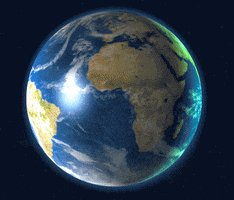La Nina-
From the sun and sand of Southern California to the mountainous, snowy landscapes of New England, the climatological phenomenon known as La Niña can have a major impact on how winter weather unfolds across the United States.

The following written content by Mary Gilbert, AccuWeather meteorologist
The term La Niña may be one that casual weather observers as well as aficionados hear meteorologists using from time to time, especially when breaking down long-term weather trends or providing a sneak peek at conditions expected during an upcoming winter or hurricane season. But, what exactly is La Niña? Let’s take an in-depth look.
The key to how winter in the United States may unfold often lies thousands of miles away in the open waters of the equatorial Pacific Ocean. It’s there where the roots of a climatological phenomenon known as La Niña originate and eventually help shape weather patterns worldwide.

The pattern occurs when sea surface temperatures in the central and eastern Pacific Ocean drop to lower-than-average levels for an extended amount of time. This process is the exact opposite of El Niño, a phase in which sea surface temperatures rise to above-average levels.
La Niña, which translates to “little girl” in Spanish, and El Niño, which translates to “little boy” in Spanish, are two phases of a three-pronged natural climate pattern that occurs across a large portion of the tropical Pacific Ocean known as the El Niño-Southern Oscillation (ENSO). ENSO’s three phases are broken down into La Niña’s cool phase, El Niño’s warm phase and a phase that is neither warm nor cool, known as neutral.
Meteorologists often refer to the effects of climate patterns using a concept known as teleconnections. Teleconnections are a series of factors, like sea surface temperatures, that can have implications on weather conditions in areas far from the origin of those factors.
Want to know what the weather will be like in a few days? According to AccuWeather Meteorologist Joe Bauer, people who live in the United States can often just look to the west.
“Most of the weather the U.S. experiences first has to travel across the Pacific Ocean,” Bauer explained.
he weather impacts of La Niña in the U.S. are often most apparent during the winter, although the climate pattern typically lasts nine months to a year and can occasionally last for years, according to the National Oceanic and Atmospheric Administration.
So, how can La Niña, a phenomenon that occurs thousands of miles away, influence weather in the U.S.? The cooler water in the equatorial Pacific can help to amplify the northern jet stream, also known as the polar jet stream, which is a major driver in where storms track across the country during winter. A more potent polar jet stream ushers in colder air and more frequent storms across the northern tier of the nation. At the same time, the pattern also weakens the southern jet stream, known as the subtropical jet stream, and often results in drier and milder weather across southern areas of the U.S. Read more from AccuWeather.
Subscribe here





